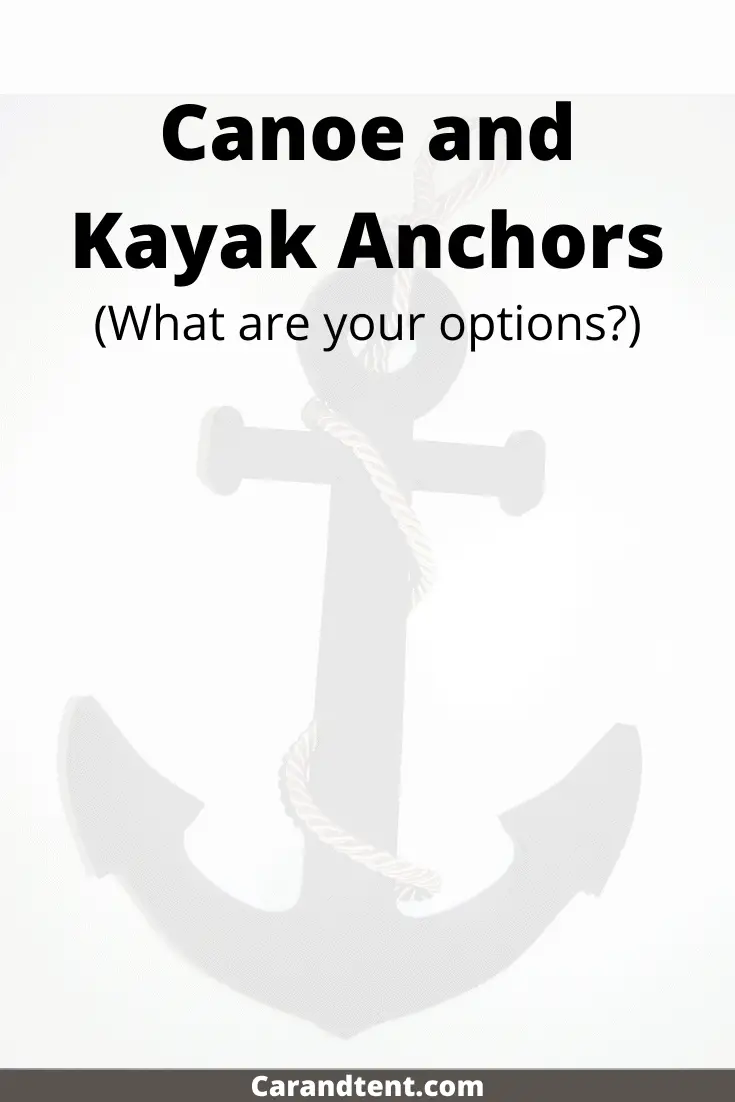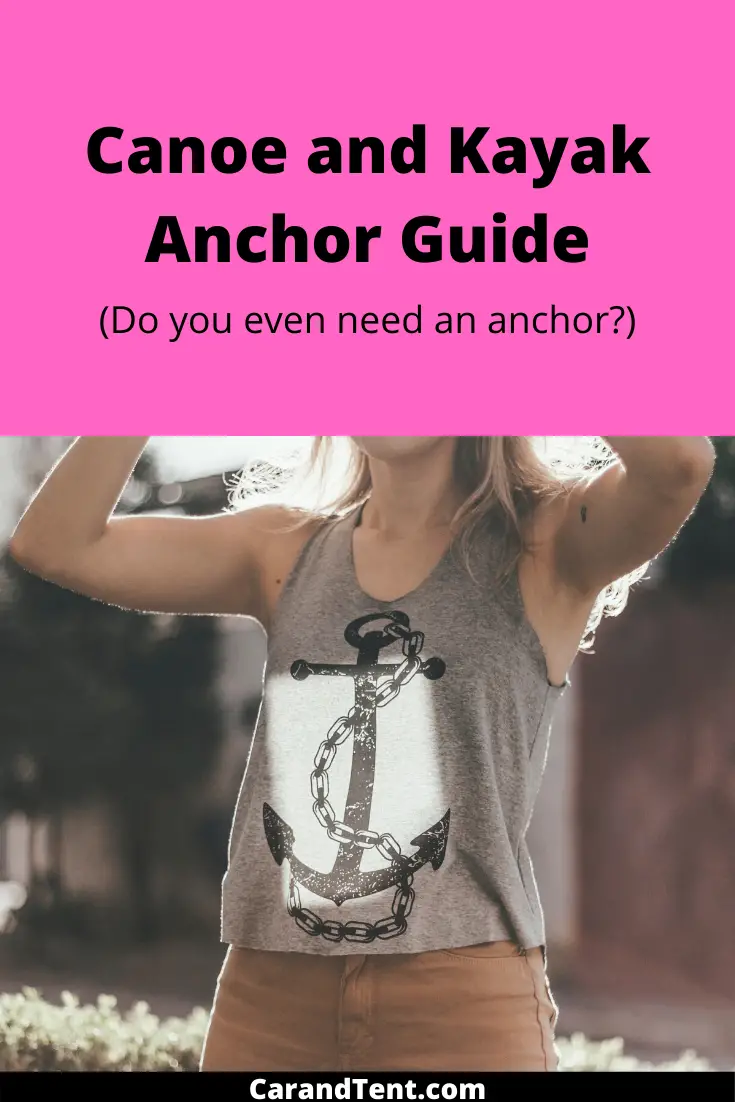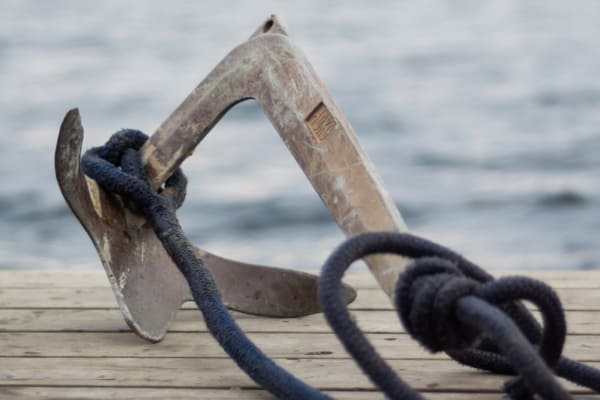
Most canoers and kayakers will never need an anchor. For some people though, an anchor can be incredibly useful and you can use an anchor on a kayak pretty easily.
But how big of an anchor do you need for a kayak or a canoe? In general, you won’t need an anchor heavier than 5 pounds on a kayak or a canoe. The true answer to this question though is that the weight of your anchor will vary depending on the size and weight of your boat as well as the type of water you’re paddling on.
Before even considering an anchor for your canoe or kayak, you have to know what types of anchors are available. Canoe and kayak anchors can resemble more traditional anchors, but they don’t have to. There are some systems on the market today that can be far superior to standard anchors.
In the rest of this post, I’ll go over the different types of anchors you might use on a canoe or kayak as well as the different weights you might want to use for your kayak.
Table of Contents
Types of Kayak and Canoe Anchors
Anchor Poles
An anchor pole is a stake that a kayaker uses to anchor their boat to the ground. Instead of using a weight to keep the boat still, the anchor pole relies on the fact that it is planted into the sand or dirt bottom.
These types of anchors work great in shallow areas but are useless in deep waters. The advantage to them is that you can quickly anchor yourself into the ground and if you add a trolley system to your kayak, you can even determine the angle at which your boat is anchored.
Here is a quick video that shows what an anchor pole and anchor trolley system are.
Claw Anchors
A claw anchor is an anchor that is designed to claw into sandy or muddy bottoms. These anchors work great in areas where the ground is relatively clean and clear of debris.
The drawback to these anchors is that they can pull up a lot of mud and dirt. Oftentimes, you’ll have to thoroughly shake them off in the water beside your kayak or canoe before bringing them in.
Here is a video of a claw anchor being used.
As you can see, the claw really digs into the sand. If you watch the video from the beginning, however, you’ll notice that if it isn’t thrown properly it might not grab the bottom quite as well. Also, a significant amount of sand comes up with it when you retrieve it.
Drift Chains
A drift chain, also known as a drag chain, is essentially a covered length of chain that acts as an anchor for your kayak. Most DIY websites recommend that you use an old bike tube to cover the chain, but I’ve also seen people use anything from shrink wrap to PVC piping and even tape.
Drift chains are great because they don’t cost much to make or buy and they are easy to pack into a kayak. They can stop your kayak in slow-moving water and you can use them in faster waters to slow you down rather than to stop you completely. On top of all of this, a drag chain doesn’t get caught on rocks or logs as easily as many of the other types of anchors do.
Because they’re so cheap to make and easy to pack, many people will bring drift chains along with their anchor poles when kayak fishing.
Here is a fantastic video that completely details drift chains, how they’re used, and even how to make one of your own.
Drift Chutes
Drift chutes, also known as drift socks, are designed with trolling in mind. They slow the canoe or kayak down in fast water so you’ll have more time to fish in a particular area.
You could also use them when you’re trying to slow down the speed of your kayak for other reasons as well. For example, a photographer might want to slow their kayak down in a particular area to give them more time to get the perfect shot.
These anchors are nice because they weigh hardly anything and can even be folded up small enough to fit into a cargo pocket. With these anchors, you’ll choose the drift chute’s size rather than weight.
Here is a picture of a drift chute that you can buy on Amazon. The diagram below shows exactly how the drift chute works in the water.
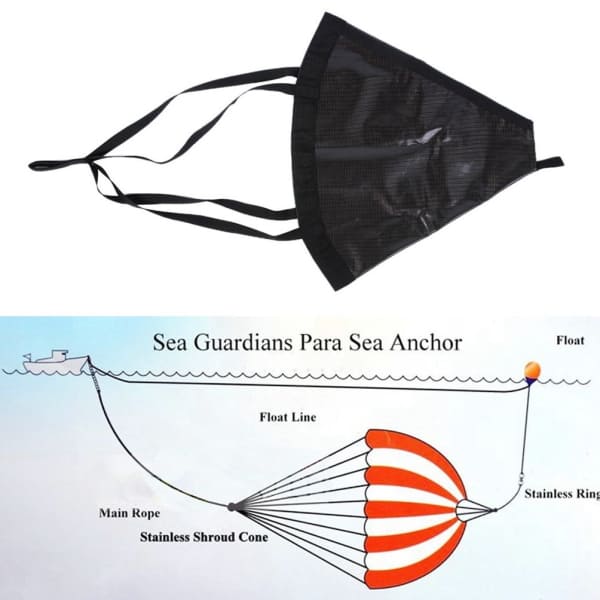
Folding Anchors
A folding kayak anchor folds in on itself to make it easier to stow on the boat. It has four blades that when folded out, look similar to a grappling hook.
These anchors usually come in 1.5 to 3-pound models that work by hooking the ground. The major advantage of this anchor is that it’s cheap and easy to use. It’s used to make a full stop and can even work within fast-flowing water.
The drawback is that the anchor can easily get caught on obstructions in the water. Also, if you throw it in the water in a fast-moving channel, you could end up flipping your kayak as soon as the anchor latches on to a nearby rock or log.
Here is what a folding kayak anchor looks like without the anchor line.
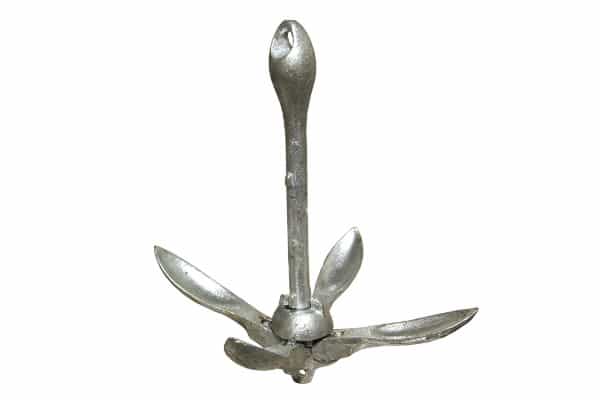
Mushroom Anchors
A mushroom anchor is another permanent anchor that’s designed to completely stop your canoe or kayak. It usually weighs about five pounds and it’s shaped like an upside-down mushroom.
The shape of the anchor helps it catch nearby mud, sand, or gravel which weighs it down further. This means that you won’t necessarily come to an immediate stop when you throw the anchor down as the anchor needs a chance to collect the sand and gravel. The benefit of this is that your stop comes slowly and you’re much less likely to flip your kayak with this type of anchor compared to a folding anchor.
One obvious drawback to this type of anchor is that it’s going to pull up a lot of dirt with it. Also, these anchors don’t fold down and pack up as easily as many of the other canoe and kayak anchors do.
Here is an image of a mushroom anchor without a line on it.
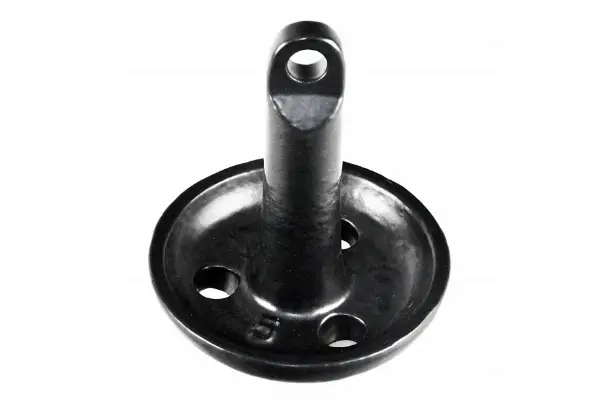
DIY Anchors for Kayaks and Canoes
The anchors I described above are the most common kayak anchors you’ll see on the market. You may also see fluke anchors, river anchors, and Richter anchors, but these are usually meant for larger and heavier boats.
Although the anchors above are relatively inexpensive and worth the money, some people decide to make their own anchors anyway. The chain anchor is the most popular DIY kayak anchor but you can essentially use anything that works to weigh you down or grab the bottom.
For years, I used a weight from an old window. If you’re unfamiliar with older windows, they used to come with cast iron window weights known as sash weights. They only weighed a few pounds and they were shaped like a cylinder so they make perfect kayak and canoe anchors for slower waters. In rivers with clean bottoms, they also do pretty well as drag weights. Mine must have been pretty good because it was eventually stolen.
I’ve seen other people fill up sections of PVC piping with weights and use them as anchors instead. Others use old cast iron weight plates with one-inch openings instead.
I love saving money, but honestly the time it takes to come up with a sub-par DIY kayak anchor usually isn’t worth the money you’ll save. If you have something lying around or you simply enjoy projects like this, feel free to make one yourself. Just don’t make you’re own anchor to save money as you’ll probably be disappointed with the savings.
Anchor Accessories
When you buy an anchor, you’ll also have the option to buy anchor accessories like anchor trolleys and vertical mount kits. I’ve even seen some interesting pulley systems to help you pull the anchor in but they all looked expensive to me.
I feel the trolley systems are great for people with anchor poles as they let you position your boat where you want it to be in the water. The other systems out there are nice to have but not really necessary in my opinion. Instead, you might be better off just using a retractable dog leash for a few dollars instead of a $100.00 pulley system.
TL;DR
Anchors come in many different styles and the weight of the anchor may not even be a factor. If you’re making a weighted anchor for yourself, consider making one in the 1.5 to 5-pound range as that is all you really need to stop a small canoe or kayak.

